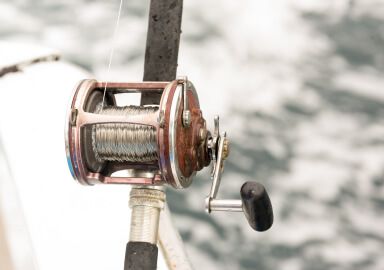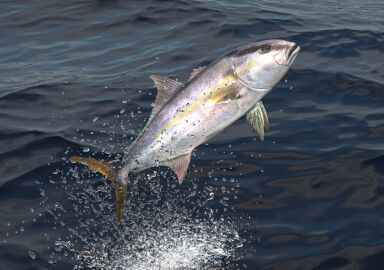Lesser Amberjack
The lesser amberjack is an Atlantic coastal fish predator that lives near the seabed and gives a good fight.
View 2 listings
2
listings
–
price starting from
1
countries
–
to the nearest trip
Where and When?
The distribution of the lesser amberjack is limited to the coastal regions of the Atlantic Ocean, on both its sides and in warmer areas. In the west they are found from Massachusetts in the north and southwards into the Gulf of Mexico, as well as much of the Caribbean Sea, including Cuba, Barbados, and up to the coast of Venezuela. In the east, the species can be caught from Spanish waters south to the coast of Ghana, including the offshore island groups, and into the Mediterranean Sea. In recent years the lesser amberjack seems to be moving further into this sea and has been reported off Greece.
Being mostly a deepish water species, the lesser amberjack can be caught throughout the year and at any time of day or night. Similarly, it is found around the equator where there is little difference between seasons and so there is little seasonal change in catches. The depth range of the lesser amberjack is given as 55-348 m. (180-1 141ft.) with the larger specimens tending to be caught in deeper water.
About Lesser Amberjack
The lesser amberjack (Serola fasciata) is similar in looks and habits to the greater amberjack (Serola hippos), but it is generally not as large and has a much more restricted distribution. The species is brownish or olive green on the back and silvery on the flanks. Its eyes are larger than the other amberjacks’ and the body is deeper. Juveniles have a series of thick dark bars down the sides. The maximum length attained is reported to be 67 cm. (26 in.) with a maximum mass of 4.6 kg. (10.1 lbs.) but most good fish landed these days are around 50 cm. (20 in.) in length.
Adult lesser amberjack feed on smallish fish and cephalopods, such as squid, while smaller individuals eat fish. There is no obvious sexual dimorphism, and little is known about breeding except that smaller specimens are usually found closer inshore while adults can be found from inshore to the edge of the continental shelf. Lesser amberjack are described as “benthopelagic”, meaning that they are usually found close to the ocean floor, but usually in quite deep water. No large-scale migration is recognised, and the species is usually found in the same areas year-round.
How to Catch?
Lesser amberjack are rarely caught from the shore, but, as they are found on the continental shelf, a small day-trip boat is usually adequate to take a sport anglers to where the species may be found. Fly-fishing and conventional spinning are of little use as the species rarely comes near the surface. You would have to fish near the bottom, and a medium spinning rod with a good fixed-spool reel filled with high quality braid is best. A fairly heavy weight or lure is often required to get down to where the fish may be feeding.
Lesser amberjack tend to congregate around structures such as wrecks and reefs, and so fishing above or beside these can be more productive. Local knowledge is useful to find what fishing techniques work best a specific area, but many approaches can succeed. Live or cut baits, vertical jigging, plastics and spoons can all work and still fishing or drifting are both employed. Lesser amberjack may not be as impressive as their larger cousins, but they are a beautiful species and give a good, strong fight before they come to the surface.






